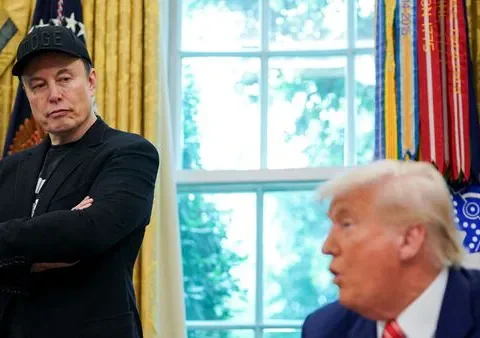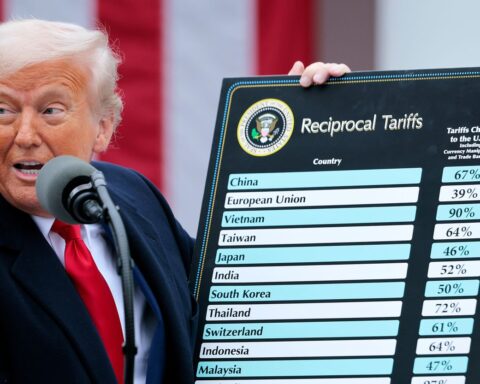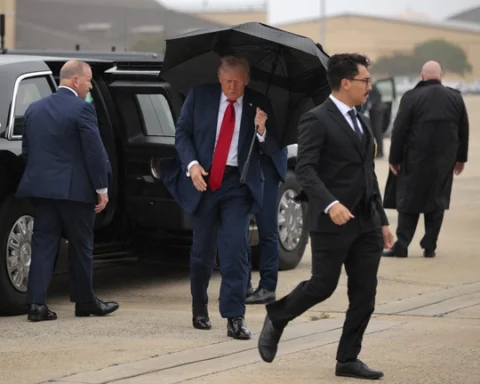Lawmakers across party lines are sounding the alarm that the Department of Government Efficiency (DOGE) cuts, spearheaded by President Donald Trump and Elon Musk, could drive away the next generation of federal workers, jeopardizing the government’s ability to attract young talent and technical experts.
Launched in early 2025, DOGE aims to slash federal spending and streamline bureaucracy, but its aggressive layoffs and hiring freezes have sparked fears of a long-term brain drain.
With over 100,000 jobs already cut and more reductions looming, critics argue that the initiative’s scorched-earth approach risks alienating college graduates and skilled professionals who once saw federal service as a stable, rewarding career path.
It’s March 22, 2025, and the debate over DOGE’s radical restructuring is intensifying. Signed into action via executive order on February 11, the initiative has already shed tens of thousands of probationary employees and offered buyouts to millions, according to NBC News.
Lawmakers like Senators Tim Kaine (D-Va.) and Chris Van Hollen (D-Md.) warn that the collateral damage could cripple agencies reliant on fresh talent, especially in states like Virginia and Maryland, home to vast federal workforces.
As DOGE’s architects—Musk and Vivek Ramaswamy—push forward with plans to dismantle telework and consolidate operations, the question looms: will the next generation turn away from a government that seems to value efficiency over opportunity?
A Bold Vision Meets Harsh Realities
DOGE emerged from Trump’s campaign promise to shrink the federal bureaucracy, now numbering about 2.3 million civilian employees, per NPR. Musk, tapped to lead the effort alongside biotech entrepreneur Ramaswamy, has framed it as a mission to eliminate waste and restore accountability, as outlined in a White House directive reported by CNN.
The February executive order mandated a one-to-four hiring ratio—allowing only one new hire for every four departures—while targeting diversity programs and non-essential roles for elimination, per The New York Times. By mid-March, agencies like the Department of Education and USDA had axed thousands of positions, with more cuts planned by September 30.
The vision is ambitious, but its execution has been chaotic. Fox News reports that the initial wave of layoffs hit probationary workers hardest—those with less than two years of service—prompting legal challenges from unions and reinstatement orders from federal judges. Confusion reigns as agencies scramble to submit cost-cutting plans, with some, like the VA, aiming to slash up to 80,000 jobs, according to NPR. Lawmakers fear this upheaval sends a chilling message to young job-seekers: the federal government is no longer a reliable employer.
The Recruitment Crisis Unfolds
For years, federal service lured graduates with promises of stability, benefits, and a chance to serve the public. Now, that allure is fading. NBC News profiles a Georgetown University student whose internship at a science agency once seemed a stepping stone to a career—until DOGE’s hiring freeze dashed her hopes, pushing her toward the private sector. “I found the work rewarding, but now it’s a risk I can’t take,” she told reporters anonymously. This sentiment echoes across campuses near Washington, D.C., where federal jobs once drew top talent.
Sen. Van Hollen, speaking to CNN, lamented the cuts’ impact on programs like the Presidential Management Fellows, designed to funnel skilled graduates into government roles. “They’re telling young people to pound sand,” said Arati Prabhakar, former Biden administration science policy director, in an NBC interview. The New York Times warns that losing this pipeline could hollow out expertise in fields like cybersecurity and public health—areas already stretched thin. Lawmakers fear that without fresh blood, agencies will struggle to innovate or even function effectively in the decades ahead.
Lawmakers Fear DOGE Cuts Will Drive Away Next Generation of Federal Workers
The heart of the concern lies in DOGE’s long-term fallout, a worry that unites Democrats and some Republicans. This subheading mirrors the article’s title, spotlighting the bipartisan unease. Sen. Kaine told NBC News, “The recruiting challenge they’re creating is enormous—and I think it’s intentional.” He argues that Musk and Trump aim to shrink government by making it an unappealing employer, a strategy Van Hollen calls a deliberate push to “drive away the next generation of civil servants.” Even GOP Rep. Don Bacon (R-Neb.) urged caution, telling NBC, “Measure twice, cut once,” highlighting the risk of losing talent only to rehire later at greater cost.
The numbers paint a stark picture. Forbes estimates that up to 300,000 jobs could vanish when combining layoffs and buyouts, with 220,000 probationary workers—9% of the workforce—in the crosshairs. The New York Times notes that tech-savvy professionals, lured by private-sector salaries, may shun government roles if job security evaporates. A LendingTree survey cited by Fox News found 20% of Americans know a federal worker fearing layoffs, amplifying the personal stakes. Lawmakers dread a future where the government can’t compete for the brightest minds.
Voices from the Workforce: Fear and Frustration
Federal employees are feeling the heat firsthand. CBS News profiles the Fork Off Coalition, a group of laid-off workers lobbying Congress to reverse the cuts. One anonymous mother from the Administration for Children and Families tearfully recounted her kids offering to sell toys to help the family, a story that underscores the human cost. “We want senators to see the personal impacts,” a former USAID worker told CBS, emphasizing the ripple effects on communities.
At agencies like NOAA, morale is plummeting. A worker told CNN that planned cuts of 1,000 jobs have left staff in limbo, unsure who’ll be next. “The uncertainty, combined with insults from the White House, has hit us hard,” they said. The BBC reports similar angst at the Department of Education, where a 50% staff reduction has survivors consoling each other over tearful calls. These voices fuel lawmakers’ fears that a demoralized workforce will deter new entrants, leaving critical services understaffed.
Economic Ripples and Local Fallout
The cuts’ economic toll worries lawmakers, especially in federal-heavy regions. Fox News cites LendingTree data showing 71% of Americans fear job losses will hurt the economy, with D.C. (20.85% federal workforce) and Maryland (5.21%) most vulnerable. Displaced workers could depress local spending, tank property values, and strain tax revenues, per Forbes. “If ex-federal workers leave, entire communities feel it,” Sen. Warner (D-Va.) warned NPR, pointing to air traffic controllers and TSA agents who might skip work during a shutdown.
The New York Times highlights a paradox: DOGE’s efficiency drive could backfire if skilled workers flee to private firms, forcing agencies to hire costly consultants—often the same ex-employees—at higher rates. A 1997 GAO report, cited by NPR, found similar outcomes during Clinton-era buyouts, with lost expertise creating backlogs. Lawmakers fear history repeating itself, with young talent opting for stability elsewhere.
DOGE’s Defenders: Efficiency Over Empathy?
Not everyone sees doom. Musk and Ramaswamy argue that a leaner government is worth the pain. Musk’s X post, reported by Fox News, gave workers a “second chance” to justify their roles, framing DOGE as a meritocracy purge. GOP leaders like Rep. James Comer (R-Ky.) back the effort, telling Government Executive they’ll strip civil-service protections to speed removals, aligning with Trump’s vision. “We’re cutting waste, not talent,” a DOGE spokesperson told CNN, though specifics remain vague.
Fox News notes that 56% of Americans support layoffs if they boost efficiency, per LendingTree, with Republicans (79%) far outpacing Democrats (36%) in approval. Yet, even supporters acknowledge risks. NPR quotes Nick Bednar, a law professor, warning that rapid, indiscriminate cuts by political novices could “break things immediately,” forcing rehires of mission-critical staff—as seen at agencies like the Bonneville Power Administration, per NPR.
A Government at Risk: What’s Next?
The stakes are high as DOGE’s April 14 deadline for agency reorganization plans nears. Legal battles loom, with unions suing over mass firings and states like California challenging cuts, per ABC News. The New York Times suggests Congress could intervene, though partisan gridlock dims that hope. Lawmakers fear a talent exodus could weaken everything from national security to disaster response, with agencies like the Forest Service already strained, per CNN.
As of March 22, 2025, the tension between efficiency and sustainability remains unresolved. Will DOGE reshape government into a lean machine, or will it repel the next generation, leaving a shell of its former self? This article draws on reporting from BBC, CNN, NBC News, Fox News, The New York Times, and other outlets, offering a deep dive into a policy shift that could redefine federal service for decades.
Focus Keywords: DOGE cuts federal workers, lawmakers fear talent loss, Department of Government Efficiency impact, federal workforce recruitment, Trump Musk government cuts

















